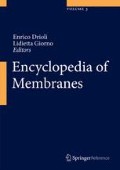Immunoglobulins are used by the immune system present in serum and tissue fluids to identify and neutralize foreign targets. Immunoglobulins are “Y”-shaped molecules comprised of two identical light chains (L) and two identical heavy chains (H) linked via disulfide covalent forces and via non-covalent interactions. Each chain has constant (CL and CH) and variable (VL and VH) domains (Holt et al. 2003). These form two antigen-binding fragments (Fab) that specifically recognize and bind to antigen molecule and a constant fragment (Fc) which is responsible for the effector function and biodistribution of the antibody (Beale 1987). Proteolytic digestion provides important information to determine an antibody molecule’s structure and function. Antibody molecules can be cleaved into fragments and each of these fragments has a distinct activity. A number of enzymes like papain, pepsin, ficin, bromelain, and elastase can be used for this purpose, papain being the most frequently used (Luo et al. 2002). Because of their smaller size as functional components of the whole molecule, antibody fragments offer several advantages over intact antibodies for use in certain immunochemical techniques and experimental applications. For this purpose, researchers have attempted to use smaller, more stable counterparts of antibodies and have also been searching for alternative ways to obtain antibody-like receptors (Haupt et al. 1998). Thus, bioengineered antibody fragments that are smaller than antibodies and have the ability to bind antigen bivalently have been promoted by the researchers (Cortese 1995). IgG molecule can be digested with papain for gaining Fab and Fc fragments.
For the separation of Fab and Fc fragments, HiTrap_r Protein A column can be used and collected the fragments by the fraction unit of the fast protein liquid chromatography (FPLC) system (Ertürk et al. 2011; Bereli et al. 2013; Aslıyüce et al. 2013). As shown in Fig. 1, a successful separation was observed and Fab and Fc fragments were separately collected. The retention times of the fragments were achieved at 3.06 and 11.64 min, respectively. The calculated chromatographic parameters such as tR, N, k′, α, and Rs values are summarized and given in Table 1. Rs value was calculated as 4.70 for Fc fragment. Because the Rs value should be higher than 1.0 for a good resolution of two peaks in such a chromatography system, the results for the resolution of Fab fragment/Fc fragment can be accepted as good resolution values.
FPLC chromatogram of IgG after digestion with papain (Ertürk et al. 2011)
References
Aslıyüce S, Uzun L, Say R, Denizli A (2013) Immunoglobulin G recognition with Fab fragments imprinted monolithic cryogels: evaluation of the effects of metal-ion assisted-coordination of template molecule. React Funct Polym 73:813–820
Beale D (1987) Molecular fragmentations. Some applications in immunology. Dev Comp Immunol 11:287–296
Bereli N, Ertürk G, Tumer MA, Say R, Denizli A (2013) Oriented immobilized anti-hIgG via Fc fragment-imprinted PHEMA cryogel for IgG purification. Biomed Chromatogr 27:599–607
Cortese R (1995) Identification of biologically active peptides using random libraries displayed on phage. Curr Opin Biotechnol 6:73–80
Ertürk G, Bereli N, Uzun L, Tumer MA (2011) Affinity separation and characterization of IgG subfragments by fast protein liquid chromatography with HiTrap_r Protein A column. Hacet J Biol Chem 39:133–138
Haupt K, Mosbach K (1998) Plastic antibodies: developments and applications. Tibtech November 16, 468–475
Holt LJ, Herring C, Jespers LS, Woolven BP, Tomlinson IA (2003) Domain antibodies: proteins for therapy. Trends Biotechnol 21:484–490
Luo Q, Mao X, Kong L, Huang X, Zou H (2002) High-performance affinity chromatography for characterization of human immunoglobulin G digestion with papain. J Chromatogr B 776:139–147
Author information
Authors and Affiliations
Corresponding author
Editor information
Editors and Affiliations
Rights and permissions
Copyright information
© 2016 Springer-Verlag Berlin Heidelberg
About this entry
Cite this entry
Bereli, N., Yavuz, H., Denizli, A. (2016). Affinity Separation and Crystallization of Fc Fragments. In: Drioli, E., Giorno, L. (eds) Encyclopedia of Membranes. Springer, Berlin, Heidelberg. https://doi.org/10.1007/978-3-662-44324-8_690
Download citation
DOI: https://doi.org/10.1007/978-3-662-44324-8_690
Published:
Publisher Name: Springer, Berlin, Heidelberg
Print ISBN: 978-3-662-44323-1
Online ISBN: 978-3-662-44324-8
eBook Packages: Chemistry and Materials ScienceReference Module Physical and Materials ScienceReference Module Chemistry, Materials and Physics



